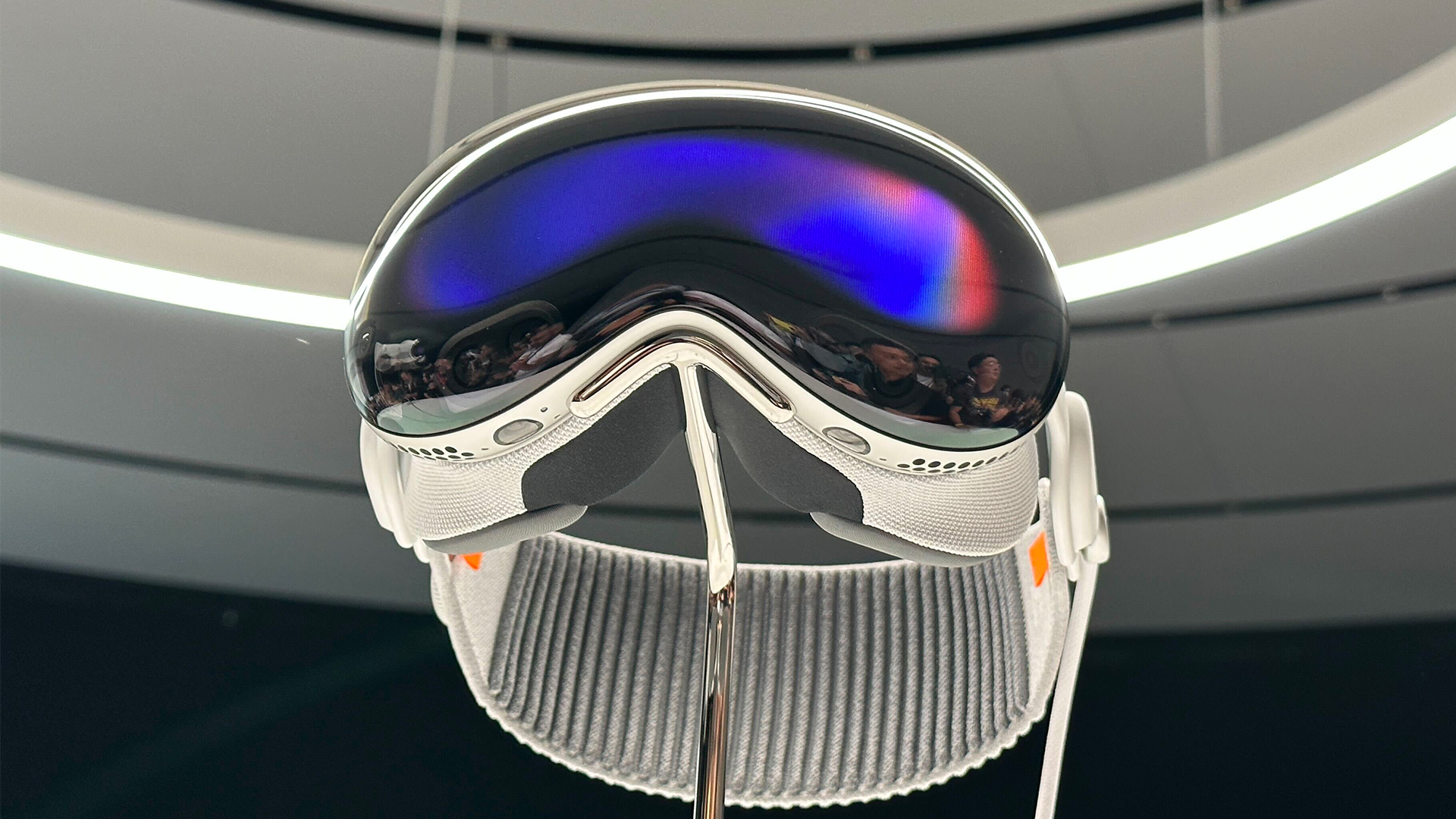The Apple Vision Pro could pack in more storage than the iPhone 15
How does 1TB sound?

We know that the Apple Vision Pro isn't going to be available to buy until 2024, but we're learning a little bit more about the specs of the device through leaks from early testers – including how much on-board storage the augmented reality headset might pack.
According to iPhoneSoft (via 9to5Mac), the Vision Pro is going to offer users 1TB of integrated storage as a default option, with 2TB or 4TB a possibility for those who need it (and who have bigger budgets to spend).
Alternatively, it might be that 256GB is offered as the amount of storage on the starting price Vision Pro headset, and that 512GB and 1TB configurations are the ones made available for those who want to spend more.
This information is supposedly from someone who has been given an early look at the AR device, and noticed the storage space listed on one of the settings screens. It's more than the standard iPhone 15 model is expected to have – if it sticks with the iPhone 14 configurations, it will be available with up to 512GB of storage.
Plenty of unknowns
It does make sense for a device like this to offer lots of room for apps and files, and it might go some way to explaining the hefty starting price of $3,499 (about £2,750 / AU$5,485). Watch this space for more Vision Pro revelations as the launch date gets closer.
While the Apple Vision Pro is now official, there's still a lot we don't know about it – and it may be that we won't find out everything until we actually have the headset in our hands and are able to test it fully.
There have been rumors that two more Vision Pro headsets are in the pipeline, and that some features – such as making group calls using augmented reality avatars – will be held back until those later generations of the device go on sale.
Get daily insight, inspiration and deals in your inbox
Sign up for breaking news, reviews, opinion, top tech deals, and more.
We're also hearing that Apple might not be planning to make a huge number of these headsets, so availability could be a problem. Right now it does feel like a high-end, experimental device rather than something aimed at the mass market.

Dave is a freelance tech journalist who has been writing about gadgets, apps and the web for more than two decades. Based out of Stockport, England, on TechRadar you'll find him covering news, features and reviews, particularly for phones, tablets and wearables. Working to ensure our breaking news coverage is the best in the business over weekends, David also has bylines at Gizmodo, T3, PopSci and a few other places besides, as well as being many years editing the likes of PC Explorer and The Hardware Handbook.